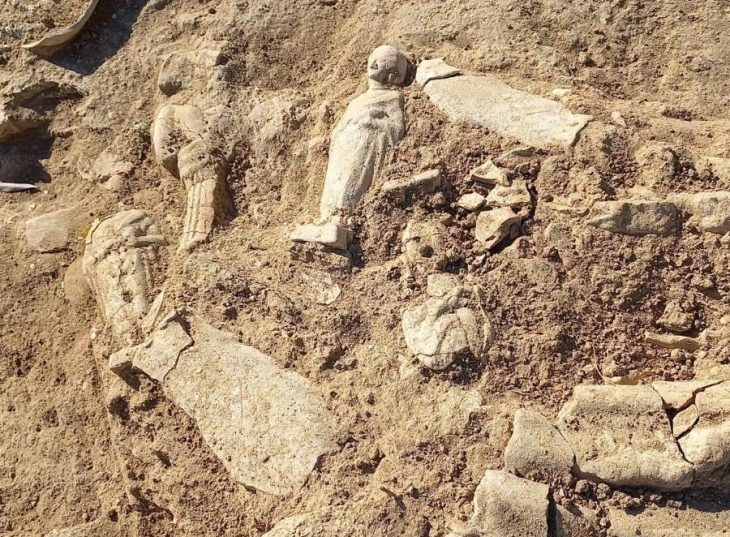A significant archaeological discovery has shed new light on the tumultuous history of Agrigento, an ancient city on the southwest coast of Sicily. Excavations in the Valley of the Temples, a UNESCO World Heritage Site, unearthed a rich votive deposit containing at least sixty terracotta figurines, female protomes, and busts, along with oil lamps, small vases, and bronze fragments.
The location of the find – House VII b, part of a housing complex north of the Temple of Juno – suggests a link to the city’s period of reconstruction following its sacking by Carthage in 406 BC. This theory is further bolstered by the dating of the deposit to the early 4th century BC.
“The findings allow us to understand the dynamics of the destruction of Agrigentum in 406 BC by the Carthaginians,” stated an announcement published by the Sicilian Region Institutional Portal. “The inhabitants had to flee in exodus towards the city of Gela.”
The nature of the deposit itself is particularly intriguing. Archaeologists believe it may represent a collection of votive offerings meticulously arranged after the house’s destruction. This could potentially reveal the story of the Akragantines (inhabitants of Agrigento) returning and reclaiming their city after the Carthaginian siege.
Further investigation, particularly focusing on the stratigraphic connections between the deposit and the house’s living and abandonment levels, will be crucial in definitively determining the function of this fascinating trove.
The discovery adds another layer to the rich tapestry of Agrigento’s history. Founded by Greek colonists around 582-580 BC, the city rose to become a prominent power in the Mediterranean. However, its fortunes took a turn for the worse in 406 BC when Carthaginian forces led by Himilco sacked the city, forcing its residents to flee. Although a brief period of Carthaginian dominance followed, the tide turned once more with the arrival of Timoleon of Corinth, who liberated the Greek cities of Sicily in 399 BC.
This recent archaeological find serves as a powerful testament to the resilience of the Akragantines. While their city may have been ravaged by war, the unearthing of the votive deposit hints at their unwavering spirit and determination to rebuild their lives and their city.
